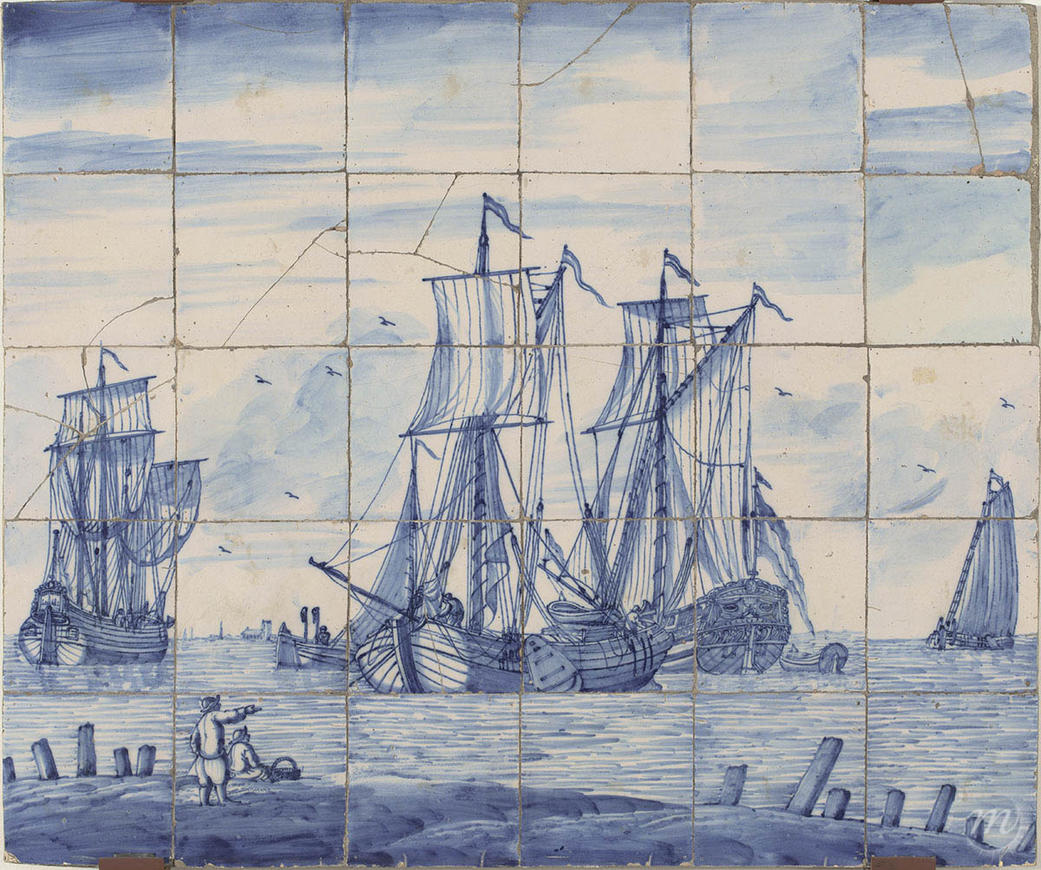The Palais des Beaux-Arts de Lille holds six panels of 30 or 42 tiles by Cornelis Boumeester. This is the only seascape among them, but it was the artist's favourite motif. Boumeester hailed from Rotterdam, one of the largest ports in the Netherlands, then called the United Provinces.
He split the image into three sections: the sky, which takes up a large proportion of the scene and sits on a low horizon, ships on a calm sea, and lastly, in the foreground, two figures on a pontoon. Why are the figures so tiny? Quite simply because they are not the subject of this composition! The artist liked to depict boats in meticulous detail, so much so that it is possible to identity the type of boat!
For example, the one in the centre is a "howker", a boat used for coastal fishing or on inland waterways, and recognisable by its rounded stern.
It seems logical that artists in the United Provinces should have favoured depictions of seascapes. In the 17th century, the country was the world's leading sea power, and had a merchant fleet worthy of an empire. The United Provinces could boast the founding of the Dutch East India Company, which traded with the most remote lands, including China and India.
(Ref. C. 1280)
Detail: The ship behind the howker has a broader, more decorated stern, and is flying a tricolour. It is very probably a warship.

The Palais des Beaux-Arts de Lille holds six panels of 30 or 42 tiles by Cornelis Boumeester. This is the only seascape among them, but it was the artist's favourite motif. Boumeester hailed from Rotterdam, one of the largest ports in the Netherlands, then called the United Provinces.
He split the image into three sections: the sky, which takes up a large proportion of the scene and sits on a low horizon, ships on a calm sea, and lastly, in the foreground, two figures on a pontoon. Why are the figures so tiny? Quite simply because they are not the subject of this composition! The artist liked to depict boats in meticulous detail, so much so that it is possible to identity the type of boat!
For example, the one in the centre is a "howker", a boat used for coastal fishing or on inland waterways, and recognisable by its rounded stern.
It seems logical that artists in the United Provinces should have favoured depictions of seascapes. In the 17th century, the country was the world's leading sea power, and had a merchant fleet worthy of an empire. The United Provinces could boast the founding of the Dutch East India Company, which traded with the most remote lands, including China and India.
(Ref. C. 1280)
Detail: The ship behind the howker has a broader, more decorated stern, and is flying a tricolour. It is very probably a warship.